How to order coffee in Italy: Navigating cafe culture like a pro
Italian coffee culture is strong, just like the espresso, and cafes are always full no matter the time of day. In Rome, cappuccinos are fantastically frothy, and the espresso is always made with quality coffee beans and ground on site.
One sip of an Italian coffee, and it will be hard to go back to Starbucks.
That said, your first time in an Italian café can be confusing if you’re not properly prepped. No worries: Here’s our guide to ordering coffee in Italy like a pro.
More tips for Italy:
• The best budget hotels in Rome
• An affordable 10-day itinerary through Italy
• Our favorite cheap hotels in Florence
How to order coffee in Italy
1. A cafe is actually called a “bar” in Italy
First, it’s important to know that what we call a “café”, Italians call a “bar”. (What’s especially confusing, but we’ll get to in a minute, is that caffè actually means “coffee”.) You’ll see hundreds of bars around Rome, on almost every corner and sometimes up to three or four in one block. To an untrained eye, you might think Italians have a drinking problem but don’t worry, they’re only coffee addicts!
Related: Our glossary of types of coffee in Rome, with a list of our favorite Roman coffee bars.
2. Drink at the counter: Italians don’t linger
Italians drink their coffee fast, and at the bar. Espresso is an essential, so they don’t waste time sipping while reading the paper or visiting with friends. Instead, they’ll pop into bars five or six times a day for a quick cup, gulped down at the counter over some banter with the barista.
So for an authentic experience, join the masses standing at the bar. The clink of ceramic cups and routine of shaking and stirring sugar packets is endearing, and one you won’t get from a table. If you do feel like sitting, be prepared for a slightly larger bill. It’s usually twice the price if you use table service.
Related: The two best espresso in Rome, steps from the Pantheon
3. Paying systems can vary
This is where it gets a little tricky. Where and how you pay depends on where and how you order. If you’re sitting, you can usually order and pay at the table, but if you’re standing, the rules are murkier. In most cases, you order and pay at the cash register, then bring your receipt to the barista, who will make your order. In other cases, you order at the bar, drink your coffee, and then tell the person at the cash register what you had. As a general rule, try the cash register first, or take a moment to watch what others are doing.
4. A guide to every drink
• Caffè: “Caffe” means “coffee” in Italian, but what you get isn’t filter coffee, but what we call espresso. You can say “espresso” instead of “caffe” if you want.
• Caffè Americano: If you’re looking for filter coffee, this is the closest you’ll get. It’s espresso with hot water added, and probably still a bit stronger than what you’re used to.
• Caffè macchiato: Meaning “stained” or “spotted” coffee, this is an espresso with a dash of hot, foamy milk on top. It’s delicious with a bit of sugar and a perfect afternoon pick-me-up.
• Caffè con panna: Similar to the macchiato, but sweeter, this espresso is topped with sweet whipped cream.
• Caffè corretto: This “corrected” coffee is served with a drop of liquor, usually cognac, grappa or Sambuca, but feel free to add whatever you prefer.
• Caffè shakerato: Delicious in the sweltering summer months, a caffè shakerato is a fresh espresso mixed with sugar and ice, and shaken vigorously like a martini until it froths as it’s poured into a chilled glass. Some people add chocolate syrup, which makes it extra divine.
• Caffè latte: This is espresso with hot milk, just like a latte in the US. But careful to specify the “caffè” part, because “latte” just means “milk”. Many tourists order a “latte” and are shocked when they’re presented with a steaming mug of white milk, much to the confusion of everyone involved. Even ordered correctly though, the caffè latte is not a common drink in Italy, and you might not get what you expect.
• Cappuccino: Saving the best for last! Italy’s most famous coffee drink, the cappuccino is a warm, soothing, perfect ratio of espresso to whole milk, frothed to perfection. One sip and you’ll realize it’s completely different than whatever cappuccino you’re used to, and in a good way. But they come with a caveat—you cannot order them after noon, unless you want to risk being scorned. Italians have a weird thing about drinking cappuccinos only in the morning, and they’ll give you very funny looks if you do otherwise.
You might notice throughout your time in Italy that Italians have strict food rules, and this is one of them. The heavy milk and foam in a cappuccino constitute their breakfast, and they deem cappuccinos far too heavy for an afternoon coffee break. They believe that dairy upsets digestion and they might be right. You’ll never see an Italian order a cappuccino after dinner, yet it’s almost all they drink in the morning.
Maybe they’re onto something, or maybe it’s one of those rituals we’ll never understand, but either way, if you want to fit in, stick to ordering them for breakfast.
Now you’re a pro! And don’t worry if you feel overwhelmed when walking into a bar. Someone will surely offer to assist, and the servers are usually very friendly. The most important thing is that you take in the bar’s atmosphere, breathe in the scent of freshly ground coffee and sweet pastries, and enjoy the taste of real Italian coffee while you can.
Your favorite cafe beverage
What’s your favorite type of coffee in Italy? Let us know in the comments below!

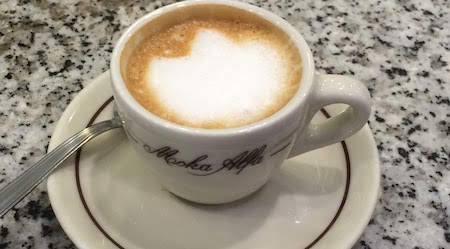
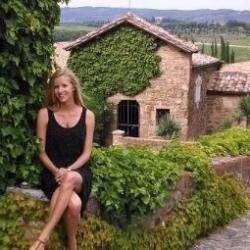
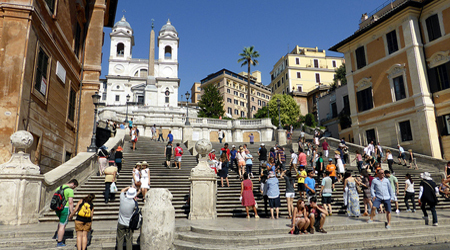
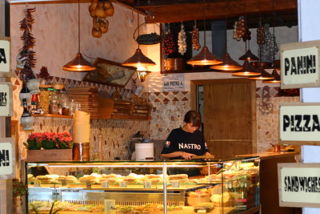
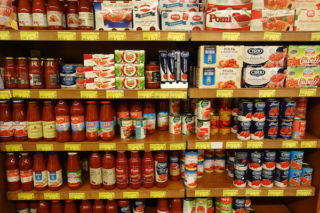
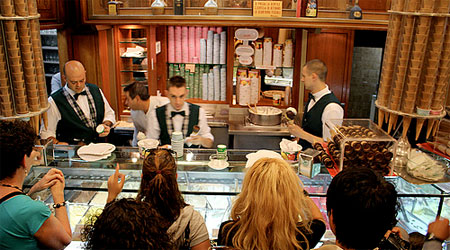

Great information! I wish I had read this earlier!
the reason behind not drinking milky coffee in the afternoon goes back to pre-refrigeration days. If fresh milk was bought in to the house, it would go sour in the hot summers, so it would all be drank in the morning before it spoils.
Great post! Italian coffee has such a great aroma.
Great post! Excellent!
Just out of curiosity, will they fill a thermos type travel mug with just Caffè Americano? My wife and I will be on a road trip through Western Europe in late December/early January and like most Americans, I love to take my coffee on the road with me.
You surely will be happy to add:
Caffè ristretto: a very small espresso
Caffè lungo: not as big as an Americano, but ‘longer’ than a normal espresso
Caffè in vetro: an espresso served in a glass cup
Macchiatone: similar to caffè macchiato but with more milk (a kind of small capuccino)
…
and there are even more 😉
Mmmmm…a Macchiatone sounds delicious. Thanks for sharing your coffee tips!
Good article, but just one thing… “caffellatte” is written like this.
To Ana: they don’t look at you because now we are used to see foreigners drinking cappuccino after lunch LOL
I know that this article is a few years old now, but I don’t think it matters.
I have read that the reason behind not drinking milky coffee in the afternoon goes back to pre-refrigeration days. If fresh milk was bought in to the house, it would go sour in the hot summers, so it would all be drank in the morning before it spoils.
I’m off to Northern Italy for the first time in 12 years, so I’ll put all of this valuable advice to good use.
BTW, great article.
Enjoy your trip. We’re glad you liked the article. Have a cappuccino for us… in the morning of course!
Pingback: To Rome with Love | Fereastra deschis?
Pingback: Less Is More: Rome’s Coffee Culture @BethFishReads #weekendcooking | Bay State Reader's Advisory
Pingback: Tourists Wandering without a Clue | Functionally Useless
Pingback: How to order coffee in Italy:done! | Coffee 454
I just got back from 10 days in Northern Italy and I had read this whole thing about not ordering a cappuccino in the afternoon. I warned my friend who was traveling with me about this but we ended up doing it anyway and we didn’t get any funny looks from any Italians. Whew! If they thought it was wrong, they must’ve kept it to themselves, which was great because the cappuccino there is so good, we wanted it twice a day!
@ Ana; as I wrote I don’t drink cappuccino but I also thought that this is maybe true but still a bit harsh! After all, the bars want to sell their products and I guess the hazard that if they recognise a ‘foreigner’ (i.e. not speaking perfectly good Italian) they prefer to do something they might not subscribe to but a sell is a sell, no?
I am happy for you that you discovered the marvellous coffees the Italians serve for yourself…. It was Italy who sold it to me very early in my life and frankly; life is too short to drink bad coffee (or drink cheap wine), isn’t it?! 🙂
If I want a single, I will say caffé, but if I want a double I always ask for espresso dopio. 🙂
A beautiful article – so true…. Luckily (for me) I don’t ever drink a cappuccino 🙂
When I stayed for 3 weeks in Florence, my friend had her cappu every morning (together with a fresh juice & a fresh, yummy pastry) while I had my tiny caffè with the same (and a small glass of cold water!); after only the first morning the barman knew us and our wishes and we parted as great friends.
Coffee drinking is a very important part of the Italian life and I’ve never experienced a better coffee culture anywhere else (several places, big cities, tiny villages).
I had countless espressos (which, as you wrote, are just ‘caffès’ in Italy), preferrably taken standing up at the bar – a cheap, hot, delightful interlude several times per day. Thank you for stirring great memories. Can’t wait to go back for a short week later in the year.